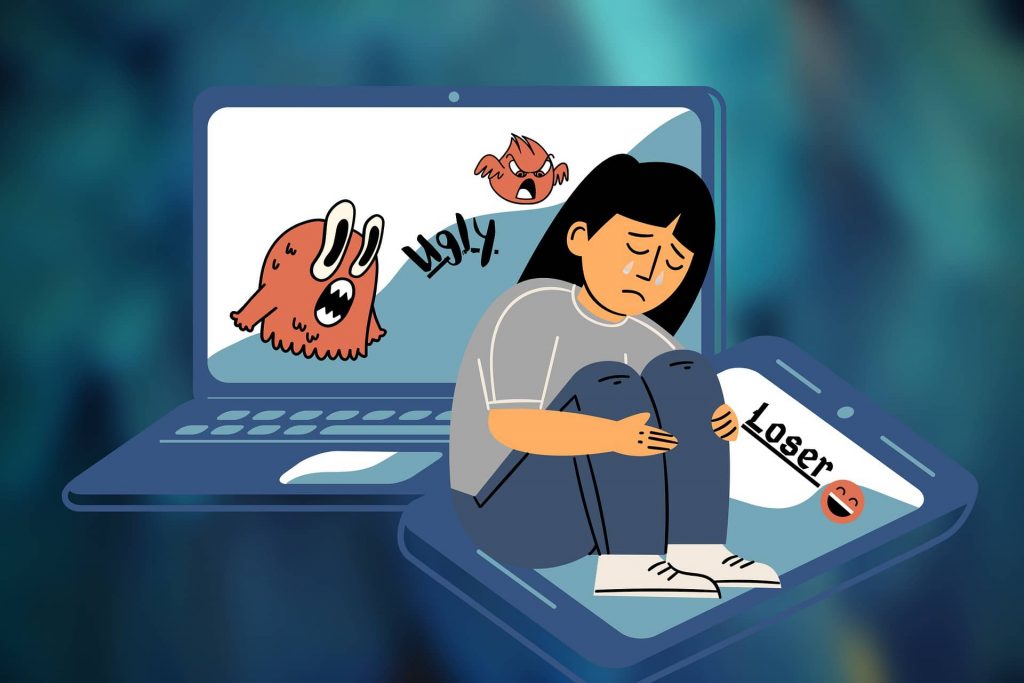Why Are Girls More Likely Than Boys to Be Victims of Cyberbullying?
10 May 2023 | 4 mins read
- Student resources
If you landed here, then you may be wondering: “which gender is more likely to be cyberbullied?”

Well, according to a study by the Cyberbullying Research Center, girls are generally more likely than boys to be victims of cyberbullying.
This could be shocking news to some, as we often associate bullying with physical intimidation, typically involving boys.
Cyberbullying, however, is a different beast altogether. As one of the most prevalent and damaging forms of harassment today, it’s crucial we understand it. It doesn’t discriminate, affecting people of all ages, backgrounds, and genders.
Yet, the experience of cyberbullying appears to be notably higher among girls.
Societal and Cultural Factors
So why the gender difference in cyberbullying? Let’s dive into some societal and cultural factors.
Firstly, we can’t ignore the impact of gender stereotypes and expectations. Even in this modern age, girls often face pressures to conform to societal norms. They’re expected to behave, dress, and even communicate in certain ways, both offline and online.
When they don’t meet these expectations, they can become targets.
The objectification and sexualization of girls online play a significant role too. A study in France showed that girls who share more photos online are often more susceptible to cyberbullying, specifically sexual harassment.
Social media platforms, where girls are more likely to share personal content, can inadvertently become a breeding ground for such behavior.
Then there’s the issue of relational aggression. This term refers to harmful behaviors that damage relationships, such as spreading rumors or excluding others – actions often attributed more to girls than boys.
Unfortunately, these actions easily translate into the online world, contributing to the gender differences in cyberbullying.
Learn the best methods for protecting yourself against online bullying in our 20-page eBook. We'll give you a list of prevention tips, how to secure your communication online to prevent becoming a victim of online harassment, and give our best solutions and resources if you are a victim of online bullying.
Online Behavior and Communication Differences
We also need to consider online behavior and communication differences. Girls generally tend to disclose more about themselves online. This higher level of self-disclosure, while fostering connections and friendships, may also increase their vulnerability to cyberbullying.
Moreover, studies suggest that girls use social media more often than boys. This increased exposure naturally raises the risk of experiencing cyberbullying. Coupled with emotional expression and support-seeking behaviors, which are more common among girls, it’s clear to see who is most likely to be involved in cyberbullying.
While these factors provide some insight, it’s crucial to remember that cyberbullying is a complex issue. It’s not about blaming the victim but understanding the dynamics at play to better protect ourselves and others.
Stay tuned for the next sections where we delve deeper into the role of bystanders and perpetrators, the impact of cyberbullying on girls, and ways to combat this issue.
The Role of Bystanders and Perpetrators
Now, let’s move on to the role of bystanders and perpetrators in this cyberbullying equation.
The dynamics of cyberbullying can be complex. It isn’t just about the victim and the bully – often, there are bystanders. The term “bystander” refers to someone who witnesses the bullying but isn’t the direct victim or perpetrator.
When it comes to cyberbullying, bystanders can either help to stop the bullying or contribute to the problem by ignoring it or even encouraging it.
So, who is most likely to be involved in cyberbullying when we consider bystanders? Well, gender plays a role here too. Research suggests that girls are more likely to intervene when they witness cyberbullying, while boys are more likely to ignore it. This difference in bystander behavior can contribute to girls’ higher rates of victimization.
Moreover, it’s important to note that girls are not just victims – they can be perpetrators too. Yes, it’s a bitter pill to swallow, but understanding this can help us tackle the problem more effectively.
The National Crime Prevention Council reports that girls are just as likely, if not more, to engage in cyberbullying activities, especially of the relational kind. The increase in girl-on-girl cyberbullying can make the online world a hostile environment for many girls.
The Impact of Cyberbullying on Girls
Alright, let’s now turn our attention to the impact of cyberbullying on girls.
It’s essential to remember that cyberbullying isn’t just ‘kids being kids.’ It’s serious and can have severe emotional, psychological, academic, and social repercussions.
Emotionally and psychologically, girls who experience cyberbullying can suffer from:
- Anxiety
- Depression
- Low self-esteem
- Eating disorders
- Suicidal thoughts
These effects are often more pronounced in girls due to their higher emotional sensitivity and the relational nature of much of the bullying they experience.
Academically, victims of cyberbullying may experience a drop in grades and lose interest in school activities. Socially, they may become withdrawn or isolated, fearing further bullying or harassment. These impacts are not just temporary – they can lead to long-term trauma, affecting the victims’ life trajectory.
Conclusion
So, why are girls more likely than boys to be victims of cyberbullying?
The answer lies in a mixture of societal and cultural factors, online behavior and communication differences, and the roles of bystanders and perpetrators. Remember, understanding these factors isn’t about blaming the victims – it’s about empowering them, and us all, to foster a safer, more respectful online environment.
As friends, parents, educators, and simply as part of this digital society, we need to address these issues head-on. Let’s raise awareness, create safe spaces for conversation, and teach our young ones to respect and support one another. After all, the internet is a fantastic tool, and everyone should feel safe to use it.
As we conclude, I want to leave you with this thought: Let’s be part of the solution, not the problem. Stand against cyberbullying today.







